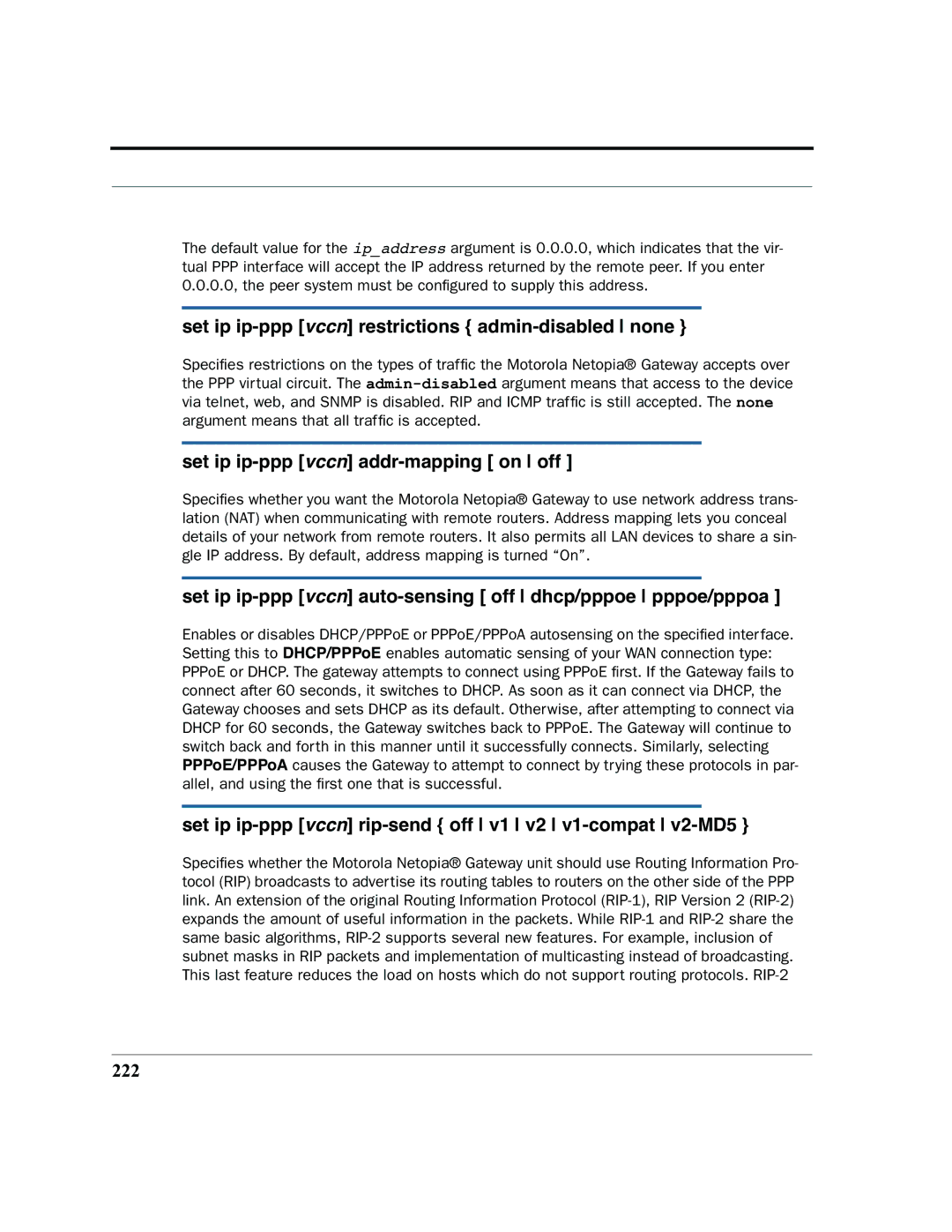
The default value for the ip_address argument is 0.0.0.0, which indicates that the vir- tual PPP interface will accept the IP address returned by the remote peer. If you enter 0.0.0.0, the peer system must be configured to supply this address.
set ip ip-ppp [vccn] restrictions { admin-disabled none }
Specifies restrictions on the types of traffic the Motorola Netopia® Gateway accepts over the PPP virtual circuit. The
set ip ip-ppp [vccn] addr-mapping [ on off ]
Specifies whether you want the Motorola Netopia® Gateway to use network address trans- lation (NAT) when communicating with remote routers. Address mapping lets you conceal details of your network from remote routers. It also permits all LAN devices to share a sin- gle IP address. By default, address mapping is turned “On”.
set ip ip-ppp [vccn] auto-sensing [ off dhcp/pppoe pppoe/pppoa ]
Enables or disables DHCP/PPPoE or PPPoE/PPPoA autosensing on the specified interface. Setting this to DHCP/PPPoE enables automatic sensing of your WAN connection type: PPPoE or DHCP. The gateway attempts to connect using PPPoE first. If the Gateway fails to connect after 60 seconds, it switches to DHCP. As soon as it can connect via DHCP, the Gateway chooses and sets DHCP as its default. Otherwise, after attempting to connect via DHCP for 60 seconds, the Gateway switches back to PPPoE. The Gateway will continue to switch back and forth in this manner until it successfully connects. Similarly, selecting PPPoE/PPPoA causes the Gateway to attempt to connect by trying these protocols in par- allel, and using the first one that is successful.
set ip ip-ppp [vccn] rip-send { off v1 v2 v1-compat v2-MD5 }
Specifies whether the Motorola Netopia® Gateway unit should use Routing Information Pro- tocol (RIP) broadcasts to advertise its routing tables to routers on the other side of the PPP link. An extension of the original Routing Information Protocol
